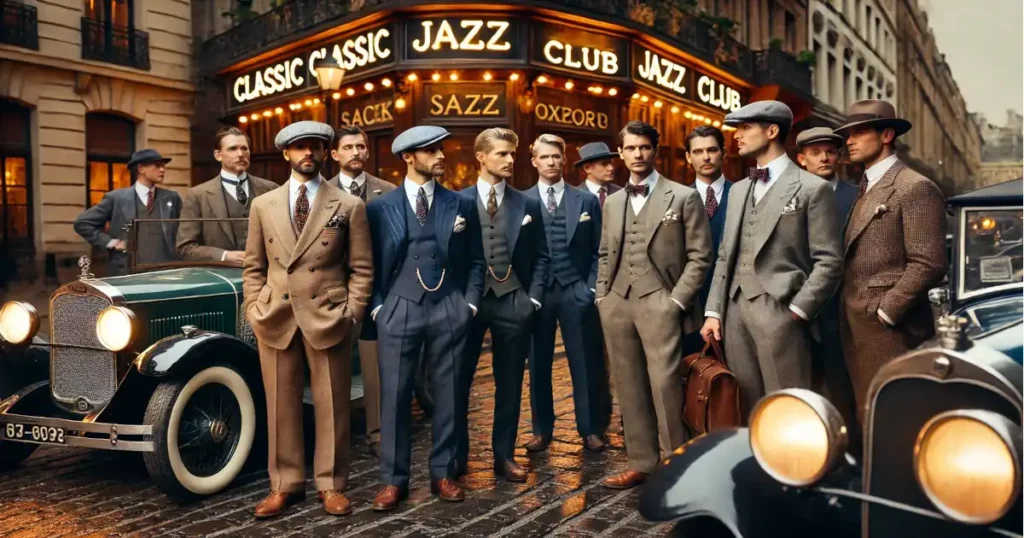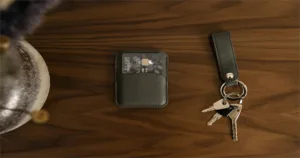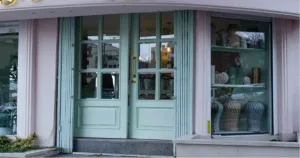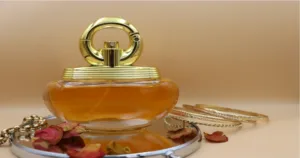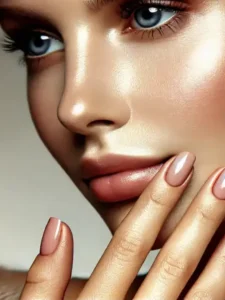Table of Contents
ToggleI. Introduction to 1920s Fashion Men
The 1920s, often called the Roaring Twenties, was a decade of immense social and cultural change. The world was recovering from the aftermath of World War I, and a new sense of optimism and freedom began to permeate society. This era was marked by economic prosperity, the rise of jazz music, and a significant shift in cultural norms. Fashion, as a reflection of the times, underwent a dramatic transformation during this period, especially for men. Gone were the stiff, formal styles of the Victorian and Edwardian eras; in their place emerged a more relaxed, modern look that embraced the new spirit of the age.
The evolution of men’s fashion in the 1920s can be seen as a response to the broader changes in society. The rigid formality that had dominated previous decades gave way to a style that was not only more comfortable but also more expressive. The influence of jazz culture, the rise of consumerism, and the advent of new technologies all played a role in shaping the fashion trends of the time. As we delve into the details of 1920s men’s fashion, we will explore how these trends reflected the broader cultural shifts of the decade.
II. The Classic 1920s Suit
A. The Sack Suit
One of the defining features of men’s fashion in the 1920s was the sack suit. This suit was characterized by its loose fit and straight silhouette, starkly contrasting the tightly tailored suits of earlier periods. The sack suit was designed for comfort, with minimal padding in the shoulders and a relaxed, boxy shape that hung naturally on the body. This style was popular among men of all social classes, from businessmen to working-class individuals, as it provided a versatile and comfortable option for everyday wear.
The sack suit’s simplicity also made it adaptable to various occasions. It could be dressed up with a tie and pocket square for formal events or worn more casually with an open-collared shirt. The sack suit’s versatility and comfort made it a staple of 1920s men’s fashion, and it became a symbol of the era’s shift towards more relaxed and modern styles.
B. Three-Piece Suits
While the sack suit was popular, the three-piece suit symbolized sophistication and elegance during the 1920s. This ensemble consisted of a jacket, waistcoat (or vest), and trousers, all made from matching fabrics. The waistcoat was often high-necked, with six buttons, and sometimes double-breasted, adding an extra layer of formality to the outfit.
The three-piece suit was particularly favored by professionals and those in high society, as it conveyed a sense of refinement and attention to detail. The jacket was typically single-breasted, with a notched lapel, and the trousers were straight-legged, often with a crease down the front. The waistcoat added an additional layer of warmth and style, making the three-piece suit both functional and fashionable.
C. Double-Breasted Suits
For those seeking a more fashion-forward look, the double-breasted suit was the go-to choice. With its overlapping front and wide lapels, the double-breasted jacket made a bold statement. It was particularly popular for formal occasions, where a touch of flair was appreciated.
Double-breasted suits were often seen in evening wear, paired with a crisp white shirt and a bow tie. The design of the double-breasted jacket, with its two parallel columns of buttons, created a broad, commanding silhouette, making it a favorite among men who wanted to stand out. Although less common than the single-breasted suit, the double-breasted style was a key element of 1920s fashion for those who wanted to make a lasting impression.
D. Fabrics and Colors
The fabrics and colors of 1920s suits were equally important in defining the style of the era. Wool, tweed, and flannel were the most commonly used materials, providing both durability and warmth. These fabrics were often chosen for their ability to hold a crease, which was essential for maintaining the sharp lines of the suit.
In terms of color, the 1920s shifted away from the dark, somber tones of previous decades. While navy and charcoal remained popular choices, men began to experiment with lighter shades such as gray, tan, and even pastel colors. Patterns also became more prevalent, with pinstripes, checks, and plaids adding visual interest to suits. This experimentation with color and pattern reflected the broader cultural embrace of individuality and self-expression during the Roaring Twenties.
III. Trousers of the Roaring Twenties
A. Oxford Bags
One of the most distinctive trends of the 1920s was the rise of Oxford bags. These extremely wide-legged trousers originated at the University of Oxford, where students began wearing them to protest against a ban on knickerbockers. The style quickly spread beyond the university, becoming a fashion statement among young men across the country.
Oxford bags were typically made from flannel or wool and could have leg openings as wide as 22 inches. They were often worn high on the waist, with pleats at the front to create additional volume. This exaggerated silhouette was a clear departure from the slim, fitted trousers of earlier periods and was embraced by those who wanted to push the boundaries of conventional fashion.
B. Cuffed Trousers
Another trend that gained popularity during the 1920s was the introduction of cuffed trousers. Cuffs, or turn-ups, were initially a practical feature designed to prevent the bottoms of trousers from fraying. However, they soon became a fashionable detail that added a touch of sophistication to a man’s outfit.
Cuffed trousers were often paired with Oxford bags or other wide-legged styles, further emphasizing the relaxed and comfortable look of the era. The cuffs themselves were typically around 1.5 to 2 inches wide, and they added a subtle but distinct element to the overall design of the trousers.
C. High-Waisted Trousers
High-waisted trousers were another key feature of 1920s men’s fashion. These trousers were designed to sit at or above the natural waistline, creating a long, lean silhouette. The high waist, combined with narrow hips and wide legs, accentuated the male figure in a way that was both flattering and stylish.
The high-waisted style was often paired with suspenders, which were more comfortable and practical than belts for keeping trousers in place. This combination allowed men to maintain a neat and polished appearance, even with the more relaxed and voluminous styles that were popular during the decade.
IV. Shirts and Collars
A. Detachable Collars
In the early 1920s, detachable collars were still a common feature of men’s shirts. These collars, which were made from stiff, starched fabric, could be attached to a shirt using buttons or studs. The advantage of detachable collars was that they could be easily replaced or cleaned, making them a practical choice for men who wanted to maintain a crisp, polished look.
There were several types of detachable collars, including wingtip, club, and point collars. Each style offered a different level of formality, with wingtip collars being the most formal and point collars more suitable for everyday wear. The use of detachable collars began to decline towards the end of the decade as softer, attached collars became more popular.
B. Soft Collars
As the 1920s progressed, the trend towards comfort and informality led to the rise of soft collars. Unlike their stiff, detachable counterparts, soft collars were made from the same fabric as the shirt and were sewn directly onto it. This design allowed for greater comfort and ease of movement, making soft collars a popular choice for both casual and formal occasions.
The transition to soft collars also reflected the influence of casual wear on men’s fashion. As leisure activities became more popular, men sought clothing that was comfortable yet stylish, and soft-collared shirts fit the bill perfectly. This shift began a more relaxed approach to men’s fashion that would continue to evolve in the following decades.
C. Shirt Patterns and Colors
The 1920s also saw a departure from the plain white shirts that had dominated men’s fashion in previous eras. As men became more adventurous with their clothing choices, patterned and colored shirts began to gain popularity. Stripes, checks, and even floral patterns became common, adding a touch of personality to an otherwise simple outfit.
These patterned shirts were often paired with solid-colored suits, creating a balanced and cohesive look. The use of color in men’s shirts also extended to ties and other accessories, allowing for greater creativity and self-expression in everyday fashion.
V. Accessories that Defined the Decade
A. Ties and Bowties
No discussion of 1920s men’s fashion would be complete without mentioning the importance of ties and bowties. These accessories were essential for completing a man’s outfit, whether for formal events or everyday wear. During the 1920s, ties became narrower and straighter, moving away from the wide, elaborate designs of earlier decades. They were often made from silk or wool and featured patterns like stripes, polka dots, and small geometrics.
Bowties were also popular, particularly for formal occasions. They came in various colors and patterns, allowing men to add a touch of flair to their evening wear. The bowtie’s association with elegance and sophistication made it a staple of 1920s formal fashion.
B. Hats
Hats were an integral part of men’s fashion in the 1920s, serving both practical and stylistic purposes. Three main styles dominated the decade:
- The Fedora: The fedora was perhaps the most iconic hat of the 1920s. With its wide brim and indented crown, the fedora was both stylish and functional, providing protection
from the sun and rain. It was favored by movie stars and gangsters, cementing its place as a symbol of 1920s style.
- The Flat Cap: Also known as a newsboy cap, the flat cap was popular among the working class and youth. Made from wool or tweed, it was a practical choice for everyday wear. The flat cap’s casual yet stylish appearance made it a versatile accessory that could be worn with both suits and more casual outfits.
- The Boater Hat: The boater hat, made from stiff straw with a flat brim and crown, was a common choice for summer wear. Often adorned with a ribbon around the base of the crown, the boater was associated with leisurely activities such as boating and picnics. Its popularity waned towards the end of the decade as more modern hat styles took over.
C. Footwear
Footwear in the 1920s was as varied and stylish as the clothing itself. Two main styles stood out during the decade:
- Oxford Shoes: Oxford shoes were the classic choice for formal wear. They were made from leather and characterized by their closed lacing system. They came in a variety of colors, including black, brown, and oxblood. Oxford shoes were often polished to a high shine, adding a touch of elegance to any outfit.
- Two-Tone Shoes: Also known as spectator shoes, two-tone shoes featured contrasting colors, typically white with black or brown. These shoes were associated with jazz culture and leisure activities, making them a popular choice for more casual occasions. The distinctive design of two-tone shoes added a playful element to men’s fashion, reflecting the exuberance of the Roaring Twenties.
D. Pocket Watches and Wristwatches
The 1920s marked a transitional period in men’s timepieces, as wristwatches began to replace pocket watches as the accessory of choice. Pocket watches, the standard for decades, were still widely used, particularly for formal occasions. They were often attached to a chain and worn in the waistcoat pocket, adding a touch of old-world elegance to a man’s attire.
However, wristwatches were becoming increasingly popular due to their practicality and modern design. Initially used by soldiers during World War I, wristwatches quickly became a fashionable accessory for everyday wear. The shift towards wristwatches reflected the broader trend towards simplicity and functionality in men’s fashion during the 1920s.
E. Cufflinks, Tie Pins, and Other Accessories
Cufflinks, tie pins, and other small accessories were crucial in 1920s men’s fashion. These items, often made from precious metals and adorned with intricate designs, added a touch of luxury and refinement to a man’s outfit. Cufflinks were particularly popular for formal wear, where they were used to fasten the cuffs of a dress shirt.
Tie pins, which were used to hold a tie in place, also became a fashionable accessory during the 1920s. These small, decorative items often featured gemstones or intricate patterns, making them a subtle yet significant detail in a man’s attire. Other accessories, such as pocket squares and collar pins, also contributed to the overall elegance and sophistication of 1920s men’s fashion.
VI. Outerwear and Seasonal Styles
A. Trench Coats
Trench coats, which gained popularity during World War I, remained a staple of men’s fashion in the 1920s. Originally designed for military use, trench coats were made from waterproof materials and featured a double-breasted front, epaulets, and a belt at the waist. Their practical design and military associations made them a popular choice for both everyday wear and formal occasions.
Trench coats were typically worn over suits, providing an extra layer of protection against the elements while maintaining a sleek and polished appearance. The military influence of the trench coat also added a touch of rugged masculinity to men’s fashion, making it a versatile and enduring piece of outerwear.
B. Overcoats
Overcoats were another essential item of outerwear in the 1920s, particularly during the colder months. Made from heavy wool, overcoats were designed to provide warmth while maintaining a sharp, tailored silhouette. They were often single-breasted, with wide lapels and a long, straight cut extending to the knees or below.
Some overcoats featured fur collars or linings, adding an extra layer of luxury and warmth. The combination of practicality and style made the overcoat a must-have item for men during the winter, ensuring that they remained both warm and fashionable.
C. Casual Outerwear
As leisure activities became more popular during the 1920s, the demand for casual outerwear also increased. Casual jackets and blazers, often made from lighter materials such as linen or cotton, became popular for sports and outdoor activities. These jackets were designed for comfort and ease of movement, making them ideal for golf, tennis, and other recreational pursuits.
The rise of casual outerwear reflected the broader trend towards a more relaxed and informal approach to fashion. Men were no longer confined to stiff, formal clothing; instead, they could choose from a range of styles that suited their lifestyles and preferences.
VII. The Influence of Hollywood and Media on 1920s Men’s Fashion
A. Film Stars as Style Icons
The rise of Hollywood during the 1920s had a profound impact on men’s fashion. Silent film stars, such as Rudolph Valentino and Douglas Fairbanks, became style icons, influencing the clothing choices of men around the world. These actors were often seen wearing the latest fashions, from tailored suits to casual sportswear, setting trends that would be emulated by the masses.
The influence of film stars extended beyond the screen, as their personal lives and fashion choices were widely covered in the media. Magazines and newspapers regularly featured articles on the latest styles worn by Hollywood’s leading men, further cementing their status as fashion icons. This connection between film and fashion helped to popularize the modern, sophisticated styles that defined the 1920s.
B. Advertising and Fashion Magazines
Print media also played a significant role in shaping the fashion trends of the 1920s. Advertising in magazines and newspapers became increasingly sophisticated, targeting the modern man who was eager to embrace the latest styles. Brands used glamorous images and persuasive language to sell everything from suits to accessories, appealing to the growing consumer culture of the time.
Fashion magazines, such as GQ and Esquire, provided men with detailed guides on how to dress for various occasions. They offered advice on everything from choosing the right tie to matching shoes with suits. These publications played a crucial role in educating men about fashion and encouraging them to experiment with new styles.
VIII. The Cultural Impact of 1920s Fashion
A. The Jazz Age and Its Influence on Fashion
The 1920s is often called the Jazz Age, a period when jazz music and dance became hugely popular across the United States and Europe. This cultural phenomenon had a significant impact on men’s fashion, as the lively, energetic spirit of jazz was reflected in the clothing styles of the time.
Jazz culture encouraged a more relaxed and expressive approach to fashion, with men embracing bolder colors, patterns, and accessories. The influence of jazz can be seen in the popularity of two-tone shoes, wide-legged trousers, and flashy ties, all of which added a sense of fun and individuality to men’s outfits. The connection between music, dance, and fashion during the Jazz Age helped to shape the modern, dynamic styles that defined the decade.
B. The Rise of Consumerism
The 1920s was also a time of increased consumerism, as mass production and new technologies made fashion more accessible to the general public. Department stores and mail-order catalogs revolutionized shopping, allowing men to purchase the latest styles with ease. This shift towards mass consumption was reflected in the fashion of the time, as men became more willing to experiment with different styles and embrace new trends.
The rise of consumerism also led to the democratization of fashion, as men from different social classes could now afford to dress in the latest styles. This increased accessibility to fashion contributed to the spread of modern, sophisticated clothing across society, further cementing the 1920s as a decade of sartorial change.
C. Social Class and Fashion
While fashion in the 1920s became more accessible, there were still distinctions between the styles worn by different social classes. Upper-class men often favored more formal, tailored clothing, such as three-piece suits and double-breasted jackets, while working-class men tended to wear more practical and casual styles, such as flat caps and cuffed trousers.
However, the lines between social classes began to blur as the decade progressed, with men from all backgrounds adopting elements of modern fashion. This blending of styles reflected the broader cultural shifts of the time, as traditional social hierarchies were challenged and new forms of self-expression emerged.
IX. Legacy of 1920s Men’s Fashion
A. Influence on Future Decades
The fashion trends of the 1920s had a lasting impact on men’s fashion in the following decades. The move towards more relaxed and modern styles continued into the 1930s and beyond, with the emphasis on comfort and individuality remaining a key aspect of men’s fashion. Elements of 1920s fashion, such as the sack suit and high-waisted trousers, would resurface in later decades, often with a modern twist.
The 1920s’ influence can also be seen in the revival of vintage fashion in the 21st century. Many designers and fashion enthusiasts have looked to the styles of the Roaring Twenties for inspiration, incorporating elements such as wide-brimmed hats, Oxford bags, and double-breasted jackets into contemporary clothing.
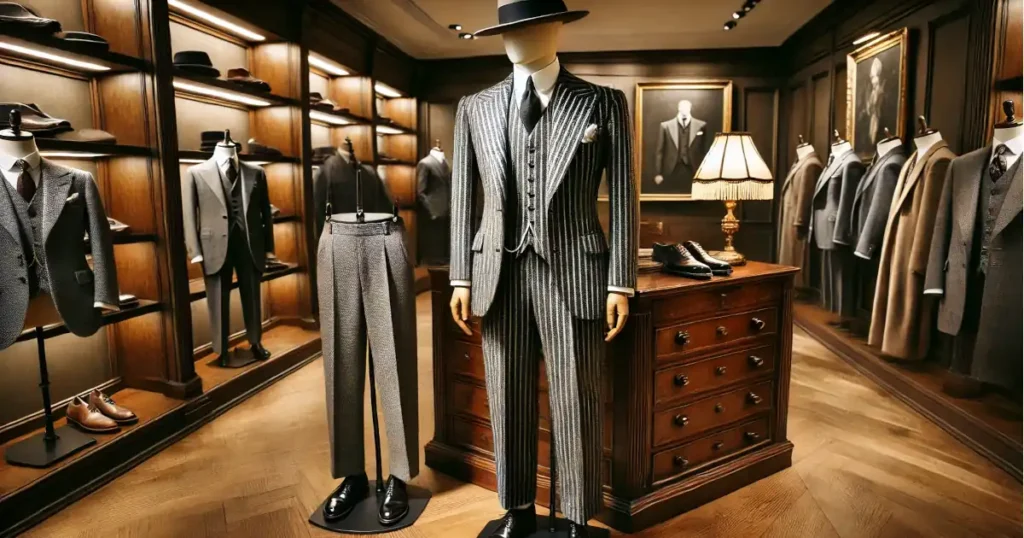
B. Collecting Vintage 1920s Fashion
For those interested in vintage fashion, the 1920s offers a wealth of options for collecting and preserving clothing and accessories from this iconic era. The appeal of vintage 1920s clothing lies not only in its historical significance but also in its timeless elegance and craftsmanship. Many pieces from this decade, particularly suits, hats, and accessories, have been meticulously crafted from high-quality materials that have stood the test of time.
When collecting vintage 1920s fashion, it’s essential to focus on condition and authenticity. Items such as three-piece suits, Oxford shoes, and fedoras are highly sought, but their value depends on how well they have been preserved. Look for pieces that have been stored properly, with minimal signs of wear and tear. It’s also important to verify the authenticity of the items, ensuring they are genuinely from the 1920s and not reproductions.
Preserving vintage clothing requires careful attention. Store garments in a cool, dry place, away from direct sunlight, to prevent fading and deterioration. Use padded hangers for suits and jackets to maintain their shape, and consider placing them in breathable garment bags to protect them from dust and moths. Accessories such as hats and shoes should be stored in their original boxes or in acid-free tissue paper to maintain their condition.
Collecting vintage 1920s fashion is not just about owning pieces from a bygone era; it’s about appreciating the artistry and design that defined the decade. Each item tells a story of the time, and wearing or displaying these pieces allows you to connect with the past in a tangible way.
C. 1920s Fashion in Modern Media
The fashion of the 1920s has experienced a resurgence in modern media, particularly in films, television shows, and themed events. Movies like The Great Gatsby (both the 1974 and 2013 adaptations) have brought the glamour and sophistication of 1920s fashion back into the spotlight, showcasing the elegance of the era’s clothing and accessories.
Television series such as Boardwalk Empire have also played a significant role in reviving interest in 1920s fashion. The show’s meticulous attention to period detail has inspired many viewers to explore the styles of the Roaring Twenties, leading to a renewed appreciation for the decade’s fashion.
Themed events, such as Gatsby parties and Prohibition-era celebrations, have become popular ways for people to experience the allure of 1920s fashion firsthand. These events often encourage attendees to dress in period-appropriate attire, providing an opportunity to wear vintage-inspired clothing and accessories that capture the era’s essence.
In the world of fashion design, the influence of the 1920s can be seen in modern collections that draw inspiration from the decade’s iconic styles. Designers often incorporate elements such as beaded embellishments, fringe details, and Art Deco motifs into their creations, paying homage to the opulence and innovation of the Roaring Twenties.
The continued presence of 1920s fashion in modern media and events underscores the decade’s lasting impact on contemporary style. Whether through film, television, or fashion design, the legacy of the 1920s continues to inspire and captivate audiences today.
X. Conclusion
A. Recap of Key Fashion Trends
The 1920s was a decade of significant change and innovation in men’s fashion. From the loose-fitting sack suits to the rise of Oxford bags and the introduction of soft collars, the fashion of the Roaring Twenties reflected the broader cultural shifts of the era. The transition from the formal, restrictive styles of the Victorian and Edwardian periods to more relaxed, modern looks marked a turning point in men’s fashion history. Accessories like fedoras, two-tone shoes, and pocket watches added sophistication and flair. At the same time, the influence of jazz culture and Hollywood stars brought a sense of fun and individuality to men’s wardrobes.
B. The Lasting Impact of 1920s Style
The fashion trends of the 1920s have left an indelible mark on men’s fashion, influencing the styles of subsequent decades and continuing to inspire modern designers. The emphasis on comfort, self-expression, and individuality that emerged during the Roaring Twenties set the stage for the evolution of men’s fashion in the 20th century and beyond. The legacy of 1920s fashion can be seen in the enduring popularity of vintage clothing, the revival of classic styles, and the ongoing fascination with the elegance and sophistication of the era.
C. Invitation to Explore and Experiment
As we reflect on the fashion of the 1920s, it’s clear that the styles of the decade offer a wealth of inspiration for modern wardrobes. Whether you’re interested in incorporating vintage pieces into your everyday look or experimenting with 1920s-inspired designs, the Roaring Twenties provides a rich source of ideas for anyone looking to add a touch of timeless elegance to their style. So why not explore the fashion of the 1920s for yourself? Whether it’s a tailored suit, a classic fedora, or a pair of spectator shoes, there’s something for everyone in the sophisticated and stylish world of 1920s men’s fashion.
The fashion of the 1920s was more than just clothing—it was a reflection of a dynamic and transformative period in history. By understanding and appreciating the styles of the Roaring Twenties, we can gain insight into the cultural shifts that shaped the modern world and continue to influence fashion today.
READ ALSO: Kate Middleton Fashion Show
Tagged in:
1920s fashion men

